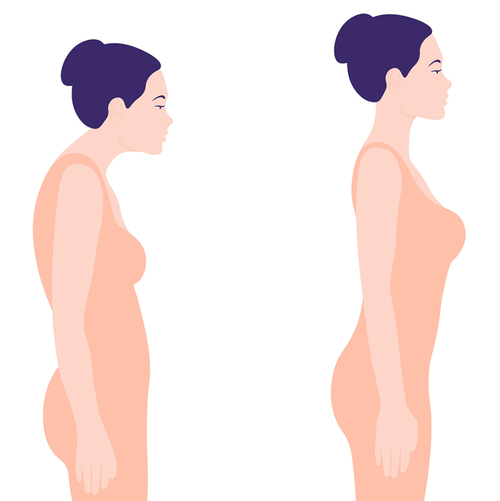
Alexander technique
Alternate names: Alexander Proprioception, AT, F.M. Alexander Technique, Technique Alexander, Técnica Alexander
Background
The Alexander Technique is a method used for overcoming conditions caused by tension, habitual movements, and postures. It is used for conditions including back pain, neck pain, repetitive strain injury, carpal tunnel syndrome, stress, fatigue, stuttering, and many others, but there is no good scientific evidence to support these uses.
The Alexander Technique was developed by Frederick Matthias Alexander, an Australian who was a Shakespearean orator. Practitioners of this technique are certified by the American Society for the Alexander Technique and must complete 1600 hours of training.
The Alexander Technique was developed by Frederick Matthias Alexander, an Australian who was a Shakespearean orator. Practitioners of this technique are certified by the American Society for the Alexander Technique and must complete 1600 hours of training.
Safety Safety definitions
The Alexander Technique is LIKELY SAFE when used appropriately. There are no known serious safety concerns from clinical research.
Special Precautions & Warnings:
Pregnancy and breast-feeding: There isn't enough reliable information to know if the Alexander Technique is safe to use when pregnant or breast-feeding. Stay on the safe side and avoid use.Effectiveness
NatMed Pro rates effectiveness based on scientific evidence according to the following scale: Effective, Likely Effective, Possibly Effective, Possibly Ineffective, Likely Ineffective, Ineffective, and Insufficient Evidence to Rate.
Insufficient evidence Effectiveness definitions
- Back pain. Early research shows that the Alexander Technique can improve disability and reduce pain by a small amount when compared to exercise in people with chronic back pain.
- Fall prevention. Early research shows that lessons in Alexander Technique improve functional reach in people older than 65 years. This might help to improve balance.
- Neck pain. There is some evidence that adding lessons in Alexander Technique to usual care can slightly improve neck pain in people that have had neck pain for a long time. The Alexander Technique also seems to work better than guided imagery for improving neck pain. However, the Alexander Technique was not better than using a heat-pack on the neck.
- Parkinson disease. Developing research shows that applying the Alexander Technique for 24 lessons can improve disability and depression in some people with Parkinson disease.
- Physical performance in elderly patients. Early research shows that getting Alexander Technique lessons is no better than usual care for improving physical performance in people 50 years and older who have vision problems.
- A group of painful conditions that affect the jaw joint and muscle (temporomandibular disorders or TMD).
- Repetitive strain injury.
- Carpal tunnel syndrome.
- Stress.
- Fatigue.
- Voice loss.
- Performance anxiety.
- Migraine headache.
- Other conditions.
Dosing & administration
Patients typically attend a series of one-on-one lessons with an Alexander Technique instructor in order to learn to identify unwanted habits. Alexander Technique lessons can involve bodywork on a table and/or observation and guidance during specific activities.
Interactions with pharmaceuticals
It is not known if this treatment interacts with any medicines. Before using this treatment, talk with your health professional if you take any medications.
Interactions with herbs & supplements
There are no known interactions with herbs and supplements.
Interactions with foods
There are no known interactions with foods.
Action
The Alexander Technique is often used to address conditions such as back pain or carpal tunnel syndrome, which can result from repetitive movements or postures. The goal of the technique is to identify those movements or postures that are harmful and correct them through certain thought processes.
The basic principles of the Alexander Technique include the following:
Primary control: This is the relationship between the head, neck, and spine. The relationship can be either free or compressed. When the relationship is free, the body moves optimally. When it is compressed, it doesn't.
Awareness: This is the process of identifying the habits that result in the physical problem, such as pain or tension.
Inhibition: This is the process of noticing when the body is moving in a compressed way that can result in a problem. By noticing this, the problematic movement can be changed or stopped.
Direction: This is the process of visualizing movement and allowing the body to move reflexively and effortlessly rather than forcing compressed movement.
The basic principles of the Alexander Technique include the following:
Primary control: This is the relationship between the head, neck, and spine. The relationship can be either free or compressed. When the relationship is free, the body moves optimally. When it is compressed, it doesn't.
Awareness: This is the process of identifying the habits that result in the physical problem, such as pain or tension.
Inhibition: This is the process of noticing when the body is moving in a compressed way that can result in a problem. By noticing this, the problematic movement can be changed or stopped.
Direction: This is the process of visualizing movement and allowing the body to move reflexively and effortlessly rather than forcing compressed movement.
vital.ly has licensed monographs from TRC Healthcare.
This monograph was last reviewed on 18/02/2022 23:31:28 and last updated on 03/08/2020 23:38:10. Monographs are reviewed and/or updated multiple times per month and at least once per year.
Natural Medicines disclaims any responsibility related to medical consequences of using any medical product. Effort is made to ensure that the information contained in this monograph is accurate at the time it was published. Consumers and medical professionals who consult this monograph are cautioned that any medical or product related decision is the sole responsibility of the consumer and/or the health care professional. A legal License Agreement sets limitations on downloading, storing, or printing content from this Database. No reproduction of this monograph or any content from this Database is permitted without written permission from the publisher. It is unlawful to download, store, or distribute content from this site.




